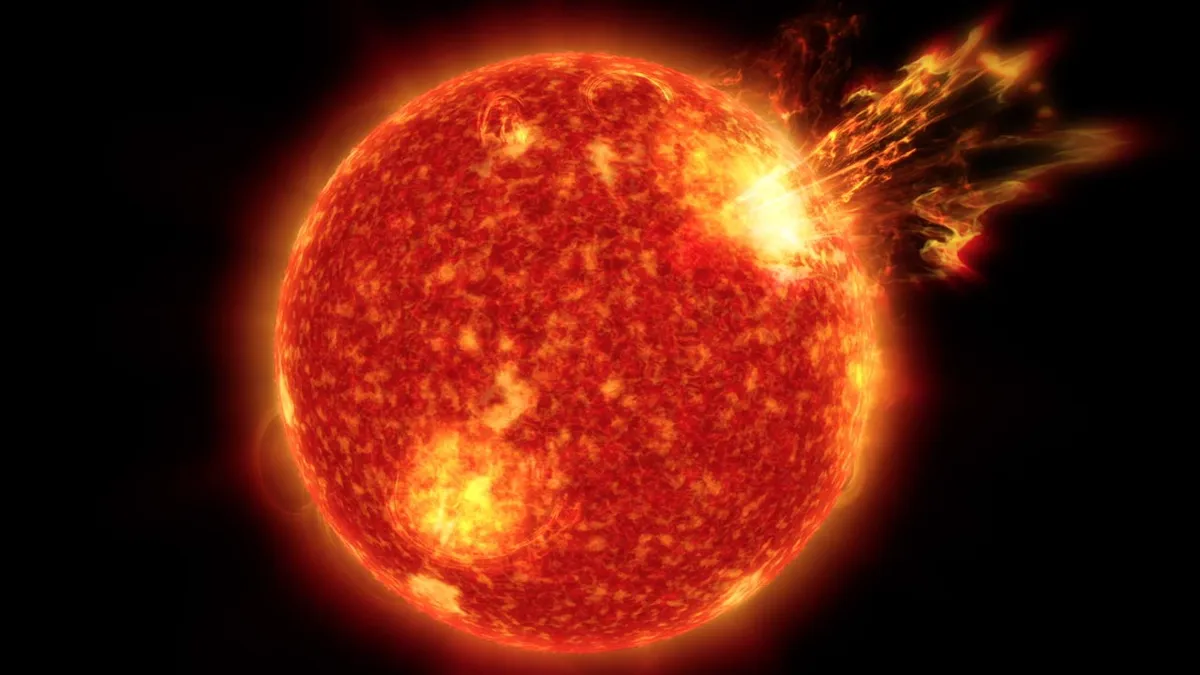
A groundbreaking space weather tabletop exercise has uncovered significant vulnerabilities in America's readiness for severe solar storms. In May 2024, representatives from various local and national government agencies convened at the Johns Hopkins Applied Physics Laboratory (APL) in Laurel, Maryland, and at a Federal Emergency Management Agency (FEMA) location in Denver, Colorado. The goal was to assess their preparedness for a major solar storm. The findings from this unique exercise have been documented in a recently released report.
During the two-day exercise, participants simulated a scenario where the sun emitted several massive coronal mass ejections (CMEs) aimed at Earth. CMEs are large-scale eruptions of magnetized plasma from the sun's upper atmosphere, known as the corona. These colossal clouds of charged particles can take several days to traverse the distance to Earth. Upon arrival, they can severely disrupt the planet's magnetic field and upper atmosphere, leading to geomagnetic storms. Such storms have the potential to cause widespread power outages, disrupt satellite communications, and damage satellite electronics. Additionally, astronauts in space may be exposed to hazardous levels of radiation during these events.
While powerful geomagnetic storms occur only once every few decades, their potential to disrupt our technology-dependent society is profound. Participants in the exercise, organized by the Space Weather Research and Operations Center (SWORM) and the National Science and Technology Council (NSTC), identified critical challenges that hinder effective responses to severe solar storms. A major takeaway was that inadequate communication protocols and insufficient data collection from both space and terrestrial sources severely limit readiness.
The exercise invited participants to envision a scenario set in January 2028, where NASA's Artemis 4 mission was in orbit around the moon, carrying two astronauts. Concurrently, two additional astronauts were on the lunar surface, while a significant sunspot had emerged, sending multiple flares and CMEs toward Earth. As the simulated CMEs approached, participants recognized the limitations of current space weather forecasting capabilities, as highlighted in the report published by the National Oceanic and Atmospheric Administration (NOAA) in mid-April.
Participants discovered that, although a CME can take up to three days to reach Earth, the impact's severity depends on the orientation of the magnetic field within the plasma it carries. When the magnetic fields align with the same poles, they tend to repel each other. However, when opposites collide, an immense energy transfer occurs, which can be catastrophic for Earth and its orbiting satellites. Alarmingly, the magnetic field's orientation is only detectable about 30 minutes before the CME strikes, as it passes the Sun-Earth Lagrange Point 1, approximately 930,000 miles (1.5 million kilometers) from Earth, where several sun-observing spacecraft are positioned.
The report emphasizes the urgent need for additional satellites to enhance forecasters' capabilities in predicting solar events. Increasing real-time data collection, refining forecasting models, and establishing earlier warning systems are critical. In the hypothetical scenario, the sequence of intense solar eruptions resulted in widespread power outages, disrupted satellite and radio communications, and degradation of GPS services. The implications of such a solar storm on real-life sectors like aviation, emergency response, and health care could be disastrous, as hospitals would be forced to rely on backup power for extended periods.
During the exercise, it became evident that satellites could deviate from their intended paths due to changes in atmospheric density caused by the sudden heating from energetic processes. Consequently, ground-based satellite trackers struggled to determine the positions of satellites and assess collision risks. Concurrently, NASA experts were tasked with evaluating the risks to astronauts and establishing emergency protocols. As the hypothetical solar storm intensified, participants quickly found themselves inundated with information, complicating decision-making processes.
The report advocates for the development of standardized communication and messaging templates similar to those used during natural disaster situations like hurricanes. Participants concluded that collaboration among government agencies is essential to effectively prepare for significant space weather events. Coincidentally, the exercise coincided with the Gannon Storm, the most potent solar storm in 20 years, which provided practical insights into many of the problems discussed. The Gannon Storm, which struck Earth on May 10, 2024, prompted a mass migration of satellites, rendering Earth’s orbit hazardous for several days, along with causing local power outages and widespread communication disruptions.
Though the Gannon Storm was notable, it paled in comparison to the most powerful solar storm in recorded history—the 1859 Carrington Event. This historical context underscores the importance of ongoing preparedness and resilience against future solar storm events.